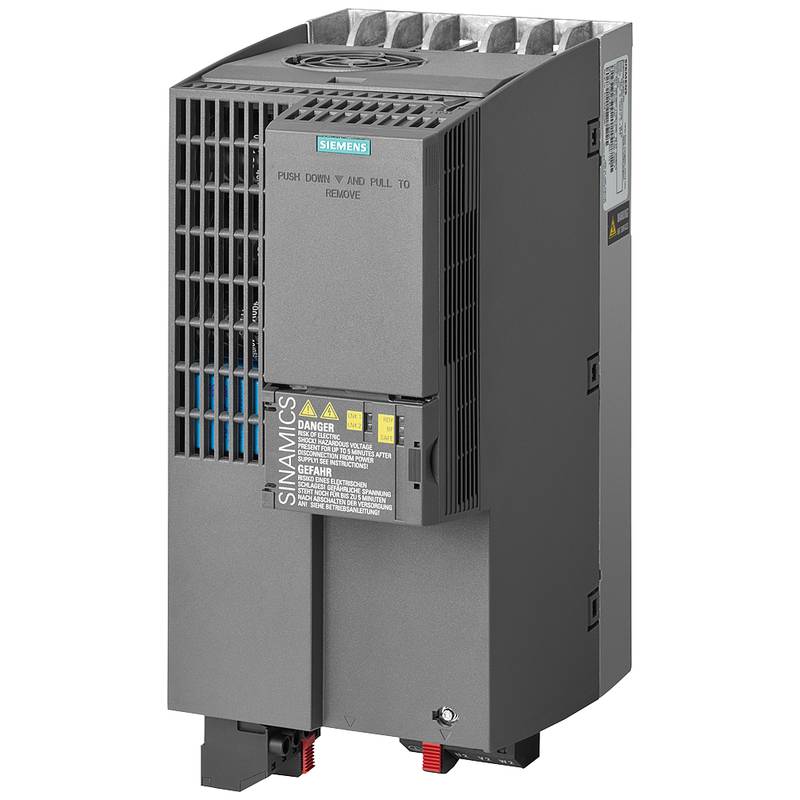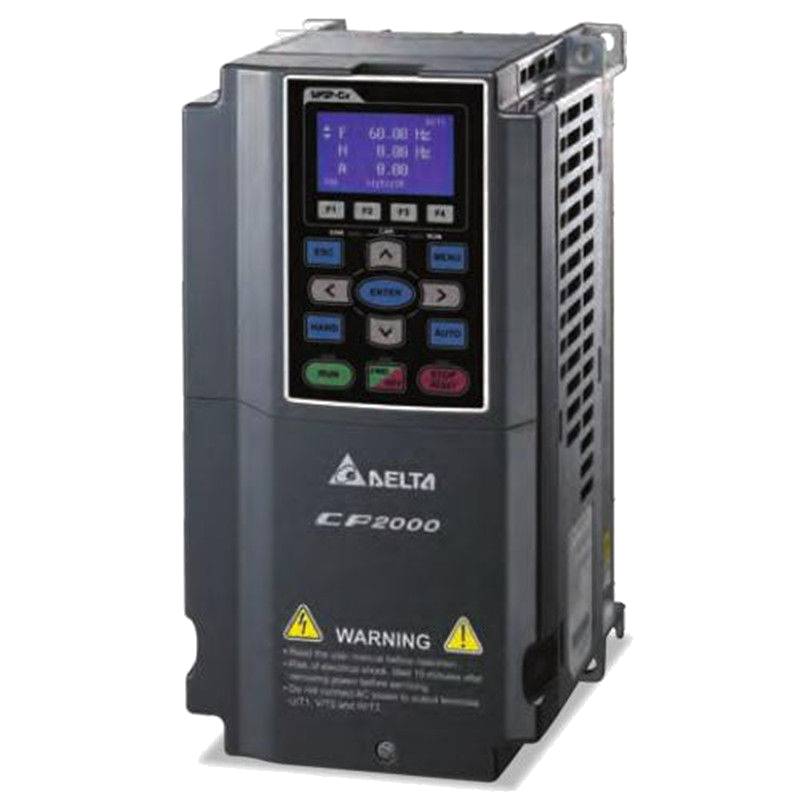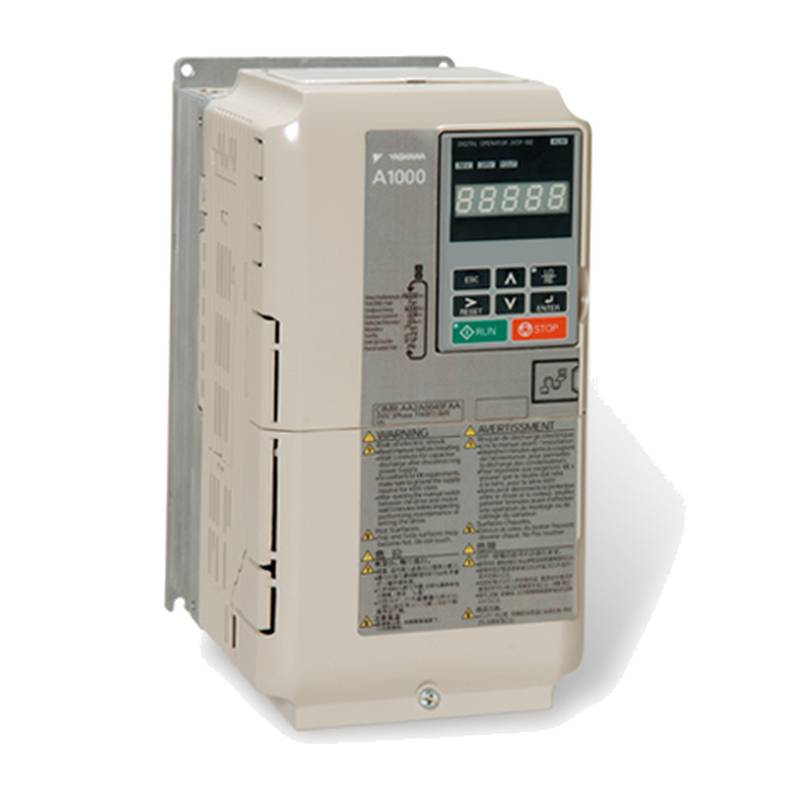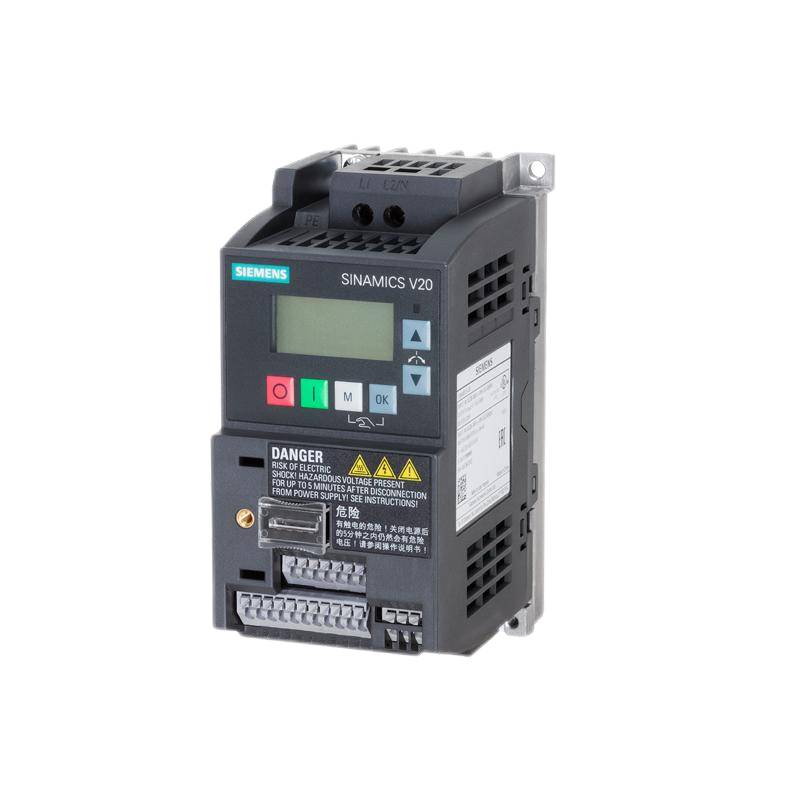
The Siemens 6SL3210-1KE23-8UB1 G120 is a robust industrial-grade AC drive engineered for demanding applications, delivering precise motor control and enhanced energy efficiency. This drive boasts a nominal output current of 37A and a powerful 18.5kW motor rating, making it suitable for a wide range of heavy-duty industrial machinery. Its advanced features include integrated safety functions, flexible communication options, and a modular design for simplified maintenance and scalability. The G120 platform is renowned for its reliability and performance, positioning it as a leading choice for applications requiring robust and intelligent motor management.
Product Specifications
| Parameter | Value |
| :--------------------- | :---------------------------------- |
| Manufacturer | Siemens |
| Series | SINAMICS G120 |
| Part Number | 6SL3210-1KE23-8UB1 |
| Rated Output Power | 18.5 kW (25 HP) |
| Rated Output Current | 37 A |
| Input Voltage | 380-480V, 3 Phase |
| Output Frequency | 0-600 Hz |
| Protection Class | IP20 |
| Dimensions (H x W x D) | 375mm x 200mm x 237mm (approx.) |
| Ambient Temperature | -20°C to +50°C |
| Control Type | Vector Control, V/f Control |
| Communication Options | PROFIBUS DP, PROFINET IO, EtherNet/IP |
| Braking | Integrated braking chopper |
Core Features & Market Positioning
The Siemens 6SL3210-1KE23-8UB1 distinguishes itself through its high power density and advanced control algorithms, offering precise speed and torque regulation even under fluctuating load conditions. Its integrated braking chopper capability ensures safe and rapid deceleration, a critical feature for many industrial processes. The G120 series is positioned as a flexible and scalable solution, allowing for customization through various operator panels, communication modules, and firmware options. This adaptability makes it a preferred choice for system integrators and end-users seeking a reliable, high-performance drive that can be tailored to specific application needs and seamlessly integrated into existing automation architectures. The drive's industrial-grade construction ensures longevity and consistent performance in harsh environments.
Key Application Scenarios
This 18.5kW SINAMICS G120 drive is ideally suited for a broad spectrum of industrial applications demanding robust motor control and high efficiency. It excels in powering conveyor systems, pumps, fans, mixers, extruders, and material handling equipment across various sectors, including manufacturing, food and beverage, automotive, and chemical processing. Its ability to deliver precise torque control and energy savings makes it particularly valuable for applications where process optimization and reduced operational costs are paramount. The drive's versatility also extends to complex machinery requiring sophisticated motion control, ensuring smooth and accurate operation.
Practical System Integration Guidance
Integrating the Siemens 6SL3210-1KE23-8UB1 into an industrial control system is streamlined due to its modular design and comprehensive connectivity options. Proper wiring involves connecting the power input terminals to the main power supply and the motor output terminals to the motor, adhering strictly to the voltage and current ratings. Grounding is essential for safety and electromagnetic compatibility. For advanced control and monitoring, communication modules like PROFIBUS or PROFINET can be installed. Parameterization is typically performed using a Human-Machine Interface (HMI) or engineering software such as Siemens TIA Portal, where specific motor data, control modes (e.g., V/f, vector control), and application-specific settings are configured.
Operation and Risk Mitigation
Operating the Siemens 6SL3210-1KE23-8UB1 requires adherence to safety protocols to mitigate risks associated with high voltage and rotating machinery. Before commissioning, ensure all safety guards are in place and that emergency stop functionalities are correctly wired and tested. Familiarize yourself with common fault codes displayed on the operator panel or HMI, such as F0001 (Overcurrent) or F0003 (Overvoltage), which often indicate issues with the power supply, motor, or braking resistor. Proper ventilation is crucial to prevent overheating, and the drive's built-in thermal monitoring systems should be active. Regular maintenance, including checking connections and cleaning vents, helps ensure reliable operation and prevents unexpected shutdowns.
Scalability & Long-Term Value
The Siemens 6SL3210-1KE23-8UB1 G120 drive offers significant scalability and long-term value through its modular architecture and compatibility with Siemens' broader automation ecosystem. The drive can be easily upgraded with different control units, I/O modules, or communication interface modules to adapt to evolving application requirements or new communication protocols. Its integration capabilities with Industrial Internet of Things (IIoT) platforms and digital services, such as predictive maintenance analytics, enhance operational efficiency and reduce downtime. This forward-thinking design ensures that the G120 remains a relevant and valuable component within modern, connected industrial facilities, providing a strong return on investment over its operational lifespan.
Frequently Asked Questions
What is the maximum motor size for the Siemens 6SL3210-1KE23-8UB1?
The Siemens 6SL3210-1KE23-8UB1 is rated for 18.5 kW (25 HP) motor output power. This specification directly determines the maximum motor capacity it can effectively control. It is engineered to provide the necessary current and voltage for motors within this power range.
This drive is designed to handle the typical current draw of an 18.5kW motor under normal operating conditions. Exceeding this motor size could lead to underperformance or drive overload. Always consult the motor's nameplate and the drive's detailed documentation for precise compatibility.
Ensure the motor's nominal current and starting current are within the drive's capabilities. For applications approaching the 18.5kW limit, consider factors like duty cycle and ambient temperature.
How do I connect the Siemens 6SL3210-1KE23-8UB1 to a PROFINET network?
Connecting the drive to PROFINET requires a compatible PROFINET communication module. Install the module into the designated slot on the drive's control unit. Then, use standard PROFINET cables to link the module's Ethernet port to the PROFINET network switch.
Once physically connected, the drive must be configured within the PROFINET network using engineering software like Siemens TIA Portal. This involves assigning an IP address and station name to the drive. You will also need to import the drive's GSDML file into the TIA Portal project.
The configuration involves defining communication parameters and data exchange points between the PLC and the drive. This allows for remote control, monitoring, and diagnostics over the PROFINET network.
What are the typical troubleshooting steps for common faults on this G120 drive?
For common faults like overcurrent (F0001), check for motor short circuits or excessive load. Verify motor and cable integrity. Investigate if the load is mechanically binding or if the acceleration ramps are too steep.
For overvoltage (F0003) or undervoltage (F0002) faults, inspect the main power supply voltage stability. Ensure it is within the drive's acceptable input voltage range (380-480V). Check for issues with regenerative braking if applicable.
If a parameter fault (F0xxx) occurs, it often indicates an issue with configuration. Review the set parameters against the application requirements and the Siemens documentation for correct settings. A parameter restore to factory defaults may be a temporary diagnostic step.
Can I use this drive for a high-inertia load?
Yes, the Siemens 6SL3210-1KE23-8UB1 G120 is capable of handling high-inertia loads with proper configuration. You will need to adjust acceleration and deceleration ramps to accommodate the longer time required to speed up or slow down the inertia.
Utilize the drive's advanced control modes, such as vector control, for optimal performance with high-inertia applications. These modes provide better torque response and regulation. Ensure the drive's braking capabilities are adequate or consider adding an external braking resistor.
Proper sizing of the drive for high-inertia loads is critical. Always consider the peak torque requirements during acceleration and deceleration, not just the continuous running torque. Consult the application manual for guidance on inertia calculations.
What is the ambient temperature range for operation?
The Siemens 6SL3210-1KE23-8UB1 is designed to operate within an ambient temperature range of -20°C to +50°C. This wide range makes it suitable for many industrial environments, including those with significant temperature fluctuations.
However, operating at the upper limits of this temperature range may require derating of the drive's output current. It is essential to ensure adequate ventilation and cooling for the drive, especially in enclosed control cabinets.
Exceeding the specified ambient temperature limits can lead to overheating, reduced lifespan, and potential drive failure. Always monitor the drive's internal temperature and ensure proper airflow around the unit.
What are the safety features integrated into the Siemens 6SL3210-1KE23-8UB1?
This G120 drive integrates important safety features, including Safe Torque Off (STO). STO prevents the drive from unintentionally starting by reliably switching off the motor's torque. This is a fundamental safety function for many machine safety concepts.
The drive supports other safety functions depending on the control unit used, such as Safe Stop 1 (SS1) and Safely Limited Speed (SLS). These advanced safety features contribute to the overall safety integrity level (SIL) of the machine.
To implement these safety functions, dedicated safety-related communication or hardware interfaces may be required. Proper integration and validation of safety functions are crucial and must comply with relevant machine safety standards.
How can I program or commission the drive?
Commissioning and programming are typically done via an operator panel connected directly to the drive or through engineering software like Siemens TIA Portal. The TIA Portal offers a comprehensive environment for configuration, parameterization, and diagnostics.
Initial setup involves entering basic motor data (power, voltage, current, speed) and selecting the desired control mode (V/f, vector control). For advanced control, specific parameters for acceleration/deceleration ramps, current limits, and PID control must be configured.
During commissioning, it is recommended to perform an auto-tuning function if available, which optimizes the drive parameters for the connected motor. Always refer to the specific operator panel manual or TIA Portal documentation for detailed instructions.
What communication protocols are supported?
The Siemens 6SL3210-1KE23-8UB1 supports a variety of industrial communication protocols through optional communication modules. These commonly include PROFIBUS DP for fieldbus communication and PROFINET IO, which offers higher performance and integrated safety capabilities.
Other protocols like EtherNet/IP are also often available via specific communication adapters, allowing integration into diverse automation networks. The choice of protocol module depends on the existing infrastructure and the specific requirements of the control system.
Selecting the appropriate communication module is key to enabling seamless data exchange for control, monitoring, and diagnostics between the drive and the higher-level automation system, such as a PLC.
What is the IP rating of this drive?
The Siemens 6SL3210-1KE23-8UB1 has an IP20 protection rating. This means it is protected against solid objects greater than 12.5 mm (fingers) but offers no protection against water ingress.
Due to its IP20 rating, this drive is intended for installation within a control cabinet or enclosure that provides a higher degree of protection against environmental factors like dust and moisture. The enclosure itself must meet the required IP rating for the specific industrial environment.
Ensure that any openings or cable entries into the control cabinet are properly sealed to maintain the overall enclosure's protection level and prevent contaminants from reaching the drive.
What are the advantages of using vector control with this drive?
Vector control provides superior motor performance by independently controlling the magnetic flux and torque-producing components of the motor current. This results in precise speed and torque regulation, even at low speeds or during rapid load changes.
With vector control, the drive can achieve faster dynamic response and higher accuracy compared to simpler V/f control methods. This is crucial for applications requiring smooth motion, precise positioning, or maintaining consistent torque under varying conditions.
This advanced control mode optimizes motor efficiency and can reduce energy consumption by ensuring the motor operates at its most efficient point. It is particularly beneficial for applications with demanding dynamic performance requirements.

























